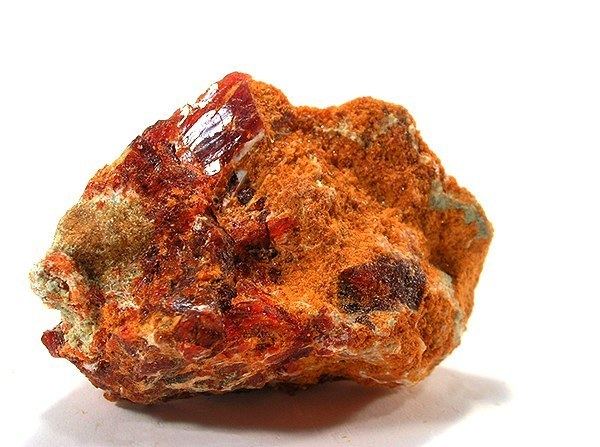Category Sulfate minerals Strunz classification 7.DC.25 Space group P21/n | Formula(repeating unit) MgFe(SO4)2(OH)·7H2O Crystal system Monoclinic | |
 | ||
Crystal class Prismatic (2/m)(same H-M symbol) | ||
Botryogen is a hydrous magnesium sulfate mineral with formula: MgFe3+(SO4)2(OH)·7H2O. It is also known as quetenite.
It crystallizes in the monoclinic prismatic system and typically occurs as vitreous bright yellow to red botryoidal to reniform masses and radiating crystal prisms. Its specific gravity is 2 to 2.1 and its Mohs hardness is 2.
It occurs in arid climates as a secondary alteration product of pyrite-bearing deposits.
It was first described in 1828 for an occurrence in the Falu mine of Falun, Dalarna, Sweden. It was named for its grape like appearance from Greek botrys for bunch of grapes and genos to bear.
References
Botryogen Wikipedia(Text) CC BY-SA
